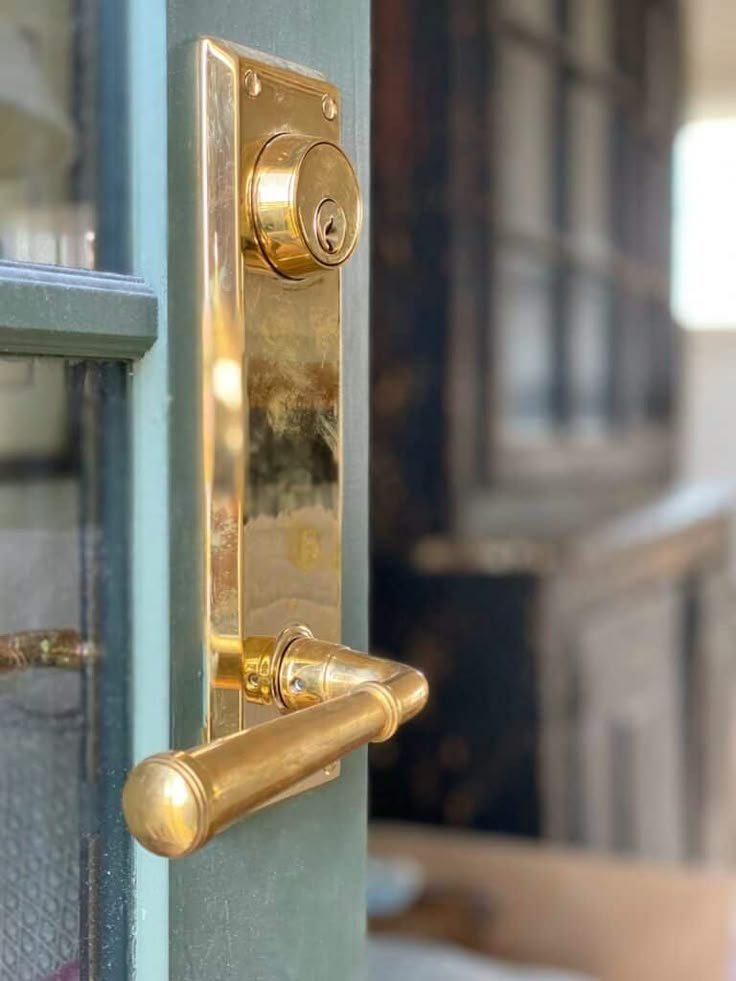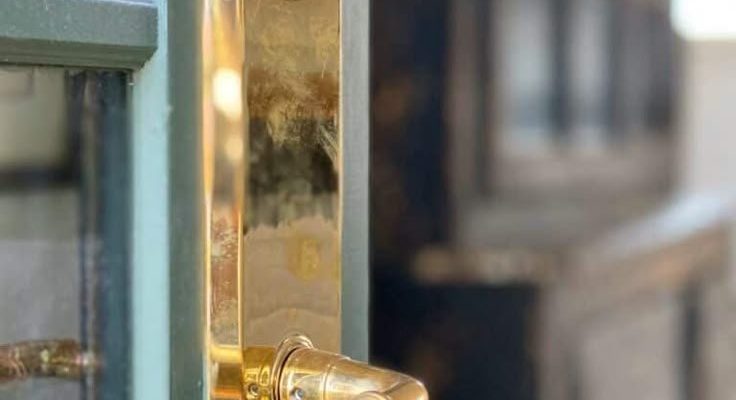
When you have unlacquered brass, you’re embracing a natural look that ages beautifully. But with that beauty comes a bit of responsibility. Without a protective coating, brass is more vulnerable to oxidation and tarnishing. It can change color and develop spots, which can be a bummer for the design of your space. Let’s explore how to keep your brass in tip-top shape, so it remains the star of your home’s entrance.
Understanding Why Brass Tarnishes
Before we dive into prevention methods, it’s helpful to grasp why brass tarnishes in the first place. Brass is an alloy made primarily of copper and zinc. When it’s exposed to air, moisture, and other elements, it can react, forming a patina—think of it like rust on steel, but more colorful.
The main culprit behind tarnishing is oxidation. This process happens when the copper in brass reacts with oxygen, causing a dull or greenish appearance. Environmental factors like humidity, air pollution, and even your own fingerprints can accelerate this process.
Additionally, brass can also tarnish due to contact with cleaning agents or harsh chemicals. If you’ve ever noticed a spot or stain after using a cleaner, you may have experienced chemical tarnishing. Keeping this in mind is crucial when maintaining your brass hardware.
Regular Cleaning: Your First Line of Defense
One of the best ways to prevent tarnishing is through regular cleaning. It’s like brushing your teeth—do it consistently, and you’ll keep things fresh! Use a soft cloth to wipe down your brass hardware weekly. This simple action can remove dust, dirt, and oils that can lead to tarnishing.
Here’s how to clean brass effectively:
- Use a gentle soap and water solution or a specialized brass cleaner.
- Gently scrub with a soft cloth or sponge to avoid scratching.
- Rinse and dry thoroughly to prevent water spots.
By making this cleaning routine part of your home care, you’ll help maintain that shiny look and delay the tarnishing process.
Applying Protective Coatings
If you’re serious about avoiding tarnishing, applying a protective coating can be a game-changer. Think of it as sunscreen for your brass. There are several products on the market designed specifically for this purpose. Clear lacquer sprays can provide a barrier against the elements without altering the brass’s appearance.
However, remember that if you’re using unlacquered brass for its natural aging character, you might want to avoid coatings altogether. Instead, look for options like:
- Micro-crystalline wax: This gives a subtle shine and helps repel moisture.
- Brass polish: Some polishes contain waxes that offer temporary protection.
When applying these products, make sure to follow the manufacturer’s instructions for the best results.
Controlling Environmental Factors
Environmental conditions play a big role in how quickly your brass tarnishes. If you live in a humid area or near the coast, you might notice tarnishing happening more quickly. However, that doesn’t mean you’re helpless!
Consider implementing some changes in your home:
- Dehumidifiers: Use these in areas with high moisture levels, such as entryways or bathrooms.
- Ventilation: Proper airflow can help reduce humidity and moisture accumulation.
- Temperature Control: Maintain a moderate temperature, as extreme fluctuations can speed up tarnishing.
By addressing these environmental aspects, you’ll create a more hospitable environment for your brass hardware.
Handle with Care: Avoiding Contact Damage
It’s easy to overlook the impact of daily use on your brass door hardware. Every time you touch the doorknob or handle, you’re adding oils, dirt, and moisture from your hands. This can contribute to tarnishing over time.
Here are some simple tips to minimize contact damage:
- Use a Soft Cloth: When touching the hardware, consider using a cloth or wearing gloves.
- Train Family Members: Encourage everyone to be mindful of how they use the door hardware.
- Limit Cleaning Products: Avoid sprays and cleaners that might leave residue.
These small changes can help maintain the beauty of your brass.
Repairing Tarnished Brass: When It Happens
Even with the best prevention methods, tarnishing can still occur. If you find that your brass has tarnished, don’t worry! You can restore its shine with some straightforward cleaning techniques.
To clean tarnished brass effectively:
- Make a Paste: Combine equal parts of baking soda and vinegar to create a paste.
- Apply Gently: Use a soft cloth to apply the paste, working it into the tarnished areas.
- Rinse and Dry: Make sure to rinse with warm water and dry completely to avoid water spots.
If the tarnish is particularly stubborn, you might also consider using a commercial brass cleaner. Just remember to follow the instructions closely to avoid damaging the brass.
Embrace the Beauty of Aging Brass
While preventing tarnish is important, many homeowners love the look of aged brass. Over time, the patina that forms can add character to your hardware. If you’re okay with a little tarnishing, embrace it!
Just ensure you maintain a cleaning routine. You can always polish your brass if it becomes too dull. This balance allows you to enjoy its natural beauty while keeping it looking its best.
In conclusion, preventing tarnishing on unlacquered brass door hardware requires a little effort but pays off in the long run. Regular cleaning, protective coatings, and thoughtful handling can help maintain that brilliant shine. By understanding the causes and solutions, you’ll become a pro at keeping your brass beautiful for years to come.
